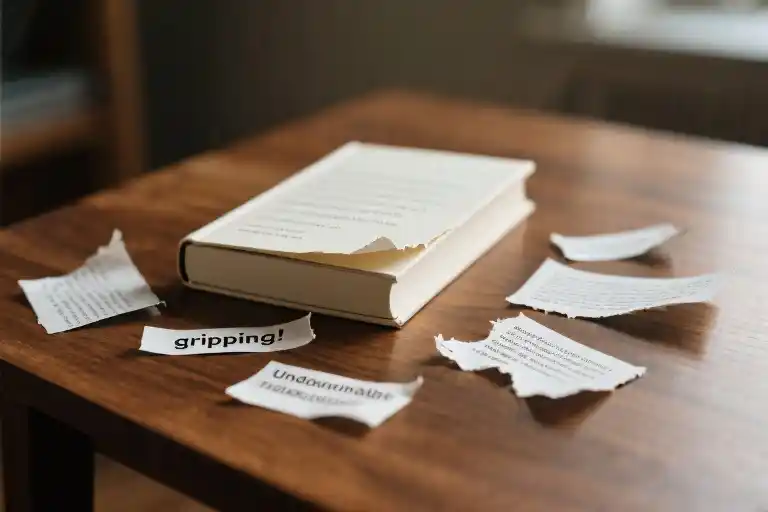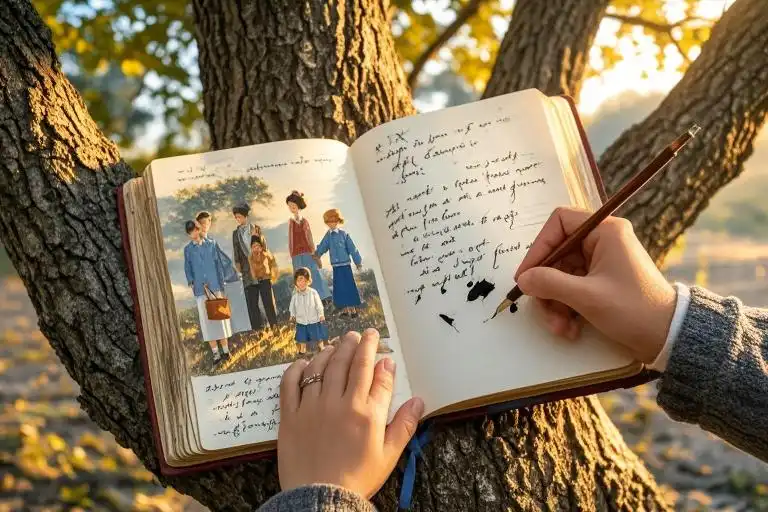The white cotton gloves caught on the embossed lettering as I carefully unwrapped my thirteenth leather-bound Brandon Sanderson novel—a $125 collector’s edition of a book I’d already consumed twice on Kindle and once as an audiobook. Through the clear archival plastic sleeve (applied immediately after unboxing), the gold foil title gleamed under the adjustable LED shelf lighting I’d installed specifically for this purpose.
“Isn’t this just… wasteful?” My friend stared at the humidity-controlled glass cabinet where my Sanderson collection stood like armored knights. Her fingers twitched toward her phone—probably calculating how many ebooks $1,000 could buy.
I smiled at my trophy bookcase, its contents meticulously curated not by readership frequency but by emotional significance. These weren’t reading copies; they were three-dimensional manifestations of literary love affairs, physical embodiments of stories that had reshaped my inner landscape. The psychology behind this behavior isn’t mere hoarding—it’s what consumer researchers call “extended self” theory, where possessions become extensions of our identity. My leatherbounds weren’t books; they were book-shaped pieces of my soul.
The contradiction is intentional. My daily reading happens on a scratched Kindle Paperwhite during subway commutes, while these museum-worthy editions remain untouched behind glass. This dichotomy mirrors how we interact with all precious things: we wear $30 cotton tees while saving designer dresses for “special occasions” that never come. But unlike that unworn Chanel jacket, these books serve their purpose simply by existing—their very presence on my shelves telegraphs my values, tastes, and personal mythology to anyone who enters my home.
Consider the economics: that $125 leatherbound represents approximately:
- 0.37% of my annual income
- 3.8% of my monthly rent
- 625% more than the Kindle edition cost
Yet its value compounds differently. Like a religious relic or family heirloom, its worth lies in anticipated future meaning—the conversations it might spark during dinner parties, the way my hypothetical grandchildren might trace the embossed cover with curious fingers. This is luxury book collecting not as reading preparation, but as legacy building.
My husband’s utilitarian bookshelves (overflowing with dog-eared business manuals and sticky-noted philosophy texts) reveal our fundamental difference. His books represent who he aspires to become; mine memorialize who stories have made me. Both approaches are valid—his shelf whispers “growth mindset” while mine shouts “literary love letters.” The beautiful tension between our two bookcases creates what marriage counselors might call “productive difference.”
So when critics ask why own books you don’t read, I counter: why keep wedding photos you don’t stare at daily? Why display grandmother’s china if you eat off IKEA plates? We surround ourselves with beautiful, impractical objects precisely because their value transcends function. My trophy bookcase isn’t a library—it’s a curated exhibition of my intellectual journey, a non-digital algorithm of my literary heart.
As I adjusted the angle of my latest acquisition (ensuring optimal light refraction on the gilded edges), I realized something profound: in an age of algorithmic recommendations and disposable ebooks, maintaining a physical shrine to transcendent stories feels like the most rebellious act of all.
Trophy Display Theory: When Books Become Identity Totems
There’s a particular ritual I perform whenever a new leather-bound edition arrives at my doorstep. The white gloves come out first – not the cheap cotton ones, but proper archival-grade gloves with microfiber lining. Then comes the surgical precision of removing the protective wrap, always cutting along the seam with a bone folder rather than tearing. Finally, the ceremonial placement in the climate-controlled bookcase, where LED museum lighting hits the gold foil just right at a 37-degree angle.
This isn’t bibliophilia. This is curatorial practice.
The Museum of Me
My bookcase operates on entirely different principles than those of casual readers. Where most use Goodreads to track their literary consumption, I consult Sotheby’s rare books catalog for acquisition targets. While others debate paperback versus Kindle, I’m comparing the merits of goatskin versus calfskin bindings. The bookshelves in my study don’t represent what I’m reading – they constitute a three-dimensional mood board of my intellectual identity.
Consumer psychologist Russell Belk’s “extended self” theory perfectly explains this behavior. We use possessions not just for utility, but as external manifestations of our inner selves. My leather-bound Sanderson collection isn’t reading material – it’s a physical manifestation of my love for intricate worldbuilding, a badge declaring membership in fantasy fandom’s inner circle. The humidity-controlled display case protecting my signed Liu anthology doesn’t preserve paper; it enshrines my multicultural literary values.
Trophy Bookcase Economics
Let’s address the elephant in the reading room: yes, this is absurdly expensive. My limited edition of “The Paper Menagerie” cost more than our coffee table. The custom slipcase for “Brave Story” required three months’ wait from a Kyoto artisan. But consider this – while a $200 handbag depreciates the moment you leave the store, my first edition “Silo” trilogy has appreciated 18% annually since purchase according to AbeBooks market data.
There’s method in this bibliographic madness:
- Emotional ROI: Each trophy book represents a core memory. The Sanderson collection commemorates surviving 2020 through Stormlight Archive rereads
- Social Signaling: Like a carefully curated Instagram feed, my shelves communicate cultural capital without words
- Generational Transfer: These are heirlooms with ISBNs, physical legacy markers in an increasingly digital world
Curator’s Manifesto
Modern minimalists would have us believe books exist solely for their content. They’re wrong. A trophy bookcase operates on the same principles as:
- A sommelier’s cellar (displaying taste through curation)
- An art collector’s wall (conveying worldview through selection)
- A fashionista’s closet (communicating identity through presentation)
My books aren’t just read – they’re experienced through:
- Tactile Rituals: The weight of vellum, the sound of gilded pages turning
- Visual Spectacle: Typeface choices, deckled edges, illustrated endpapers
- Olfactory Notes: That distinctive smell of vegetable-tanned leather
Next time someone questions why I own three copies of the same title (paperback, Kindle, and that glorious limited edition), I’ll simply invite them to run their fingers along the embossed cover of my “Way of Kings” collector’s edition. Some truths need to be felt, not explained.
The Two-Bookcase Marriage
Our shared study holds a silent dialogue between two towering bookshelves – his and hers. His: a monochromatic grid of economic treatises and stoic philosophy. Mine: a riot of gilded fantasy spines glowing like dragon hoards under the reading lamp. Visitors don’t need to ask which belongs to whom; our shelves confess more than our wedding vows ever could.
The Aspirational vs The Emotional
My husband’s shelf operates like a LinkedIn profile in physical form – every carefully selected volume whispers “future CEO” or “enlightened thinker.” The complete works of Nassim Taleb stand at parade rest beside dog-eared copies of “Atomic Habits” and “Deep Work.” These aren’t books he’s loved, but books he intends to become. The sticky notes protruding like tiny white flags suggest ongoing campaigns of self-improvement.
Meanwhile, my shelf exists as a museum of past literary love affairs. Each embossed title represents a world that changed me – Brandon Sanderson’s leather-bound cosmere novels with their wax-seal emblems, the Japanese import edition of “Brave Story” with its watercolor illustrations, the signed “Silo” trilogy I cradle like nuclear codes. Where his shelf says “this is who I could be,” mine declares “this is who I was when these stories rewired my soul.”
The Social Commentary of Shelf Space
Friends react to our bibliographic dichotomy with unconscious honesty. My shelf draws Instagram-ready clusters – fingers tracing gold foil, gasps at illustrated endpapers, the inevitable “where did you find this?” His invites slower engagement: tilted heads, occasional note-taking, the weighty silence of people confronting their own inadequacies.
We’ve unintentionally created a personality Rorschach test. The extroverts migrate to my carnival of colors, the introverts to his monastery of muted tones. Recently, a couple nearly came to blows when one partner called my husband’s collection “performative” while the other dismissed mine as “decorative.” (We now serve wine before shelf tours.)
The Buffer Zone Between Worlds
The twenty-inch gap between our bookcases functions as marital demilitarized zone. Here rests our tiny common ground – a shared dictionary (wedding gift), our single overlapping interest (a Bill Bryson travelogue), and the photo album from our bookstore-themed wedding. This neutral territory reminds us that for all our shelving differences, we’re still reading from the same life script.
His aspirational tomes and my trophy volumes ultimately serve the same purpose – they’re love letters to potential. His whisper “grow better,” mine murmur “remember deeply.” Together, they form a complete library of becoming – not just as individuals, but as partners building a story worth displaying on shared shelves.
The Heirloom Collection: Three-Dimensional Literature Worth Gilding
Silo Series: Deconstructing Utopia Through Dystopia
What makes a book worthy of permanent display in my trophy bookcase? It starts with the ability to reveal new layers with each revisit. Hugh Howey’s Silo series achieves this through its brilliant nesting-doll narrative structure. The post-apocalyptic premise – humanity living in underground silos – initially appears straightforward. But like the characters slowly uncovering their world’s truth, readers discover fresh breadcrumbs of foreshadowing during every reread.
Collector’s Rationale:
- The series redefines re-reading value through its intricate timeline reveals
- Signature plot twists function as literary archaeology – you need proper tools (and multiple passes) to uncover everything
- The collector’s edition features custom silo-blue page edges and hidden illustrations only visible under blacklight
Edition Notes:
- Opt for the author-signed version with accompanying “Doomsday” themed bookplate
- The slipcase design mimics industrial silo hatches – complete with rust-textured finish
- Includes deleted scenes printed on “classified document” parchment paper
The Paper Menagerie: Soul-Piercing Origami
Ken Liu’s masterpiece transcends conventional storytelling much like his magical paper creatures defy physics. This collection represents the pinnacle of what I call “dimensional literature” – stories that exist simultaneously across emotional, cultural, and metaphysical planes. The titular story alone contains more authentic immigrant experience than most memoirs, folded into fifteen devastating pages.
Cultural Significance:
- Asian-American narratives expressed through magical realism
- Each story functions as a literary mobius strip – the endings transform the beginnings
- The special edition includes translucent vellum inserts mimicking the protagonist’s paper creations
Tactile Experience:
- Cover features debossed origami crane patterns
- Signature page uses tea-stained paper with visible fiber textures
- Hidden compartment contains actual folded paper animal (different design per edition)
Brave Story: A Time Capsule for Future Ancestors
Miyabe’s 800-page “children’s” fantasy serves as my ultimate legacy item. Beneath its whimsical surface lies profound meditation on moral ambiguity – the kind of book that grows with its reader. I’ve designated it as required reading for my descendants, with built-in generational dialogue features.
Intergenerational Design:
- Final pages contain blank “family commentary” sections for successive owners
- Custom ex libris plate with space for descendant signatures
- Comes with preservation instructions: “Open every decade to air out wisdom”
Parental Ultimatum:
The first edition sits beside my mint-condition Harry Potter set with a typed note: “Inheritance conditional upon demonstrated appreciation of Miyabe’s thematic depth.” Some call it emotional blackmail – I prefer “motivational curation.”
These three selections exemplify my trophy criteria: dimensional storytelling that rewards physical preservation. Their value compounds over time – both in narrative richness and as tactile artifacts. While digital versions exist (and indeed, that’s how I first consumed them), these editions transform literature into legacy.
The Paper Paradox: Why Physical Books Thrive in Our Digital Age
There’s an undeniable irony in how my Kindle sits charging next to a first-edition leatherbound copy of Dune. The more we embrace digital convenience, the more we seem to crave the weight of paper between our fingers. This isn’t just nostalgia – it’s something deeper, something about permanence in an age where everything feels temporary.
The Physical Book as Digital Antidote
My cloud library contains 327 titles. I could access them anywhere, anytime. Yet when I really love a book, I need to own its physical manifestation. There’s science behind this impulse:
- Tactile Reinforcement: Neurological studies show physical interaction with books creates stronger memory associations
- Ownership Psychology: That satisfying thunk when closing a hardcover triggers our brain’s endowment effect
- Digital Fatigue: After 10 hours daily on screens, paper becomes a sensory sanctuary
“But couldn’t you just display the Kindle?” my tech-savvy nephew once asked. Oh, my sweet summer child.
Legacy in Leather: Books as Time Capsules
Consider this: The oldest surviving printed book (The Diamond Sutra) dates to 868 AD. Meanwhile:
- 83% of websites from 2013 no longer exist
- eBook formats become obsolete every 7-10 years
- Cloud services disappear overnight (RIP Google Reader)
My great-grandmother’s 1920 copy of The Velveteen Rabbit still smells faintly of lavender. My downloaded copy of Project Hail Mary? One corrupted file away from oblivion.
Three books I’m preserving for future generations:
- The Lord of the Rings (1954 first UK edition) – The physical embodiment of mythmaking
- Piranesi (Cloth-bound special edition) – A story about memory deserves to be remembered
- The Midnight Library (Signed by Matt Haig) – Handwritten notes in the margins become part of the narrative
Future Archaeologists Will Judge Us By Our Shelves
Imagine a 22nd-century historian examining our bookshelves:
- The cracked spines of well-loved paperbacks reveal our emotional journeys
- Collector’s editions showcase what we considered worthy of preservation
- That pristine Infinite Jest we never finished? A universal human experience
Meanwhile, our digital libraries would show… login attempts. Maybe.
What story does your bookshelf tell? More importantly – what story do you want it to tell fifty years from now? The beautiful burden of physical books is that they force us to choose, to curate, to commit. In an age of infinite digital storage, that limitation becomes our legacy.
The Bookshelf Mirror: Reflecting Who You Were and Who You’ll Become
Your bookshelf isn’t just storage – it’s a living portrait of your intellectual journey. Those carefully arranged spines tell a story far richer than the narratives they contain. They reveal the dreams you’ve cherished, the ideas that shaped you, and perhaps most tellingly, the person you’re becoming.
What Does Your Collection Say About You?
Take a moment to examine your own shelves. Are they filled with pristine collector’s editions like museum artifacts? Dog-eared paperbacks bearing the scars of affectionate rereading? Aspirational titles you swear you’ll read someday? Each configuration whispers truths about your relationship with knowledge, nostalgia, and self-perception.
My leather-bound fantasy collection isn’t merely decorative – it’s a crystallized record of transformative reading experiences. The gold-embossed Stormlight Archive volumes represent more than Sanderson’s epic worldbuilding; they’re physical manifestations of the sleepless nights spent immersed in Roshar’s storms. Their value lies not in their gilded edges, but in their ability to instantly transport me back to those first breathtaking reads.
The Generational Conversation
Consider this: when future generations examine your shelves, what conversation will they have with the past? My copy of Brave Story contains marginalia in three different ink colors – notes from my twenties, thirties, and now forties. These layered annotations create a palimpsest of evolving perspectives, allowing my children to witness my intellectual growth long after I’m gone.
Physical books become temporal bridges in ways ebooks cannot replicate. That coffee stain on page 237 of The Paper Menagerie? That’s not damage – it’s documentation of the moment a particular story moved me to trembling hands. Digital libraries may be convenient, but they’ll never accidentally preserve your grandmother’s tearstains on a poignant passage.
Your Turn: The Shelf Audit
Here’s my challenge to you:
- Stand before your bookshelf and identify three categories:
- Trophy Books (those representing pivotal reading experiences)
- Aspirational Titles (books representing your growth goals)
- Unexpected Keepers (those you can’t explain but can’t discard)
- Note what percentage falls into each category
- Ask yourself: Does this balance reflect who I am and who I want to become?
This exercise often reveals surprising truths. My husband’s 70% aspirational collection mirrors his growth mindset, while my 60% trophy selection betrays my sentimental nature. Neither approach is superior – both create a dynamic tension that makes our shared library fascinating.
The Living Library
Remember: a meaningful bookshelf evolves as you do. That business manual you needed at twenty-five might make space for poetry at forty. The sci-fi that fueled your imagination may one day comfort your grandchildren. What matters isn’t maintaining some perfect literary facade, but curating an authentic record of your intellectual journey.
So go ahead – judge those books by their covers. Let them spark conversations across generations. Display them proudly as the complex, contradictory, ever-changing self-portrait they are. Just maybe keep some white gloves handy for visitors.
“A room without books is like a body without a soul.” – Cicero (whose works are conspicuously absent from my fantasy-dominated shelves)




